Red Hat CEO Keynote: 5 Boldest Remarks On AI, New Products
Here are Red Hat CEO Matt Hicks’ most important remarks during his keynote today at Red Hat Summit 2023 in Boston.
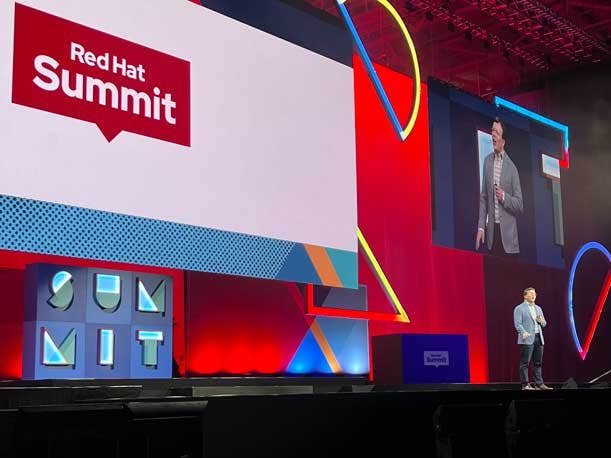
Red Hat CEO Matt Hicks kicked off Red Hat Summit 2023 on Tuesday in Boston by explaining his company’s artificial intelligence, open-source vision and new products to thousands in attendance.
“We’re in one of those [game-changing] moments right now. It’s the moment of AI,” said Hicks during his keynote at the Boston Convention Center today. “AI has moved from the obscurity of academia to the ubiquity of ChatGPT. But it’s also moved from the power of few, to the power of many.”
Several of Red Hat’s key product launches include generative AI for Ansible, an enterprise-grade open developer hub and new services in the Red Hat Trusted Software Supply Chain suite.
[Related: Red Hat Summit 2023: The Biggest Announcements]
Red Hat Summit 2023
Thousands of Red Hat partners, customers and developers flocked to Boston this week for Red Hat Summit 2023. The technology conference runs from May 23 to May 25.
“Over the next two days, we’re going to demonstrate how our approach and technology can help you manage your realities,” said Hicks in his keynote address. “Throughout the summit, you’ll hear from us about a lot of new innovations. We will be introducing a series of developer and operator focus capabilities.”
Matt Hicks was named president and CEO of the open source software superstar in July 2022. In his previous role at Red Hat, he was executive vice president of Products and Technologies where he was responsible for all product engineering, including on products such as Red Hat OpenShift, Red Hat Enterprise Linux, the JBoss middleware portfolio, OpenStack and Ansible. He has been with Raleigh, N.C.-based Red Hat for over 17 years.
CRN breaks down the five most important remarks from Matt Hicks during his keynote speech at Red Hat Summit 2023.
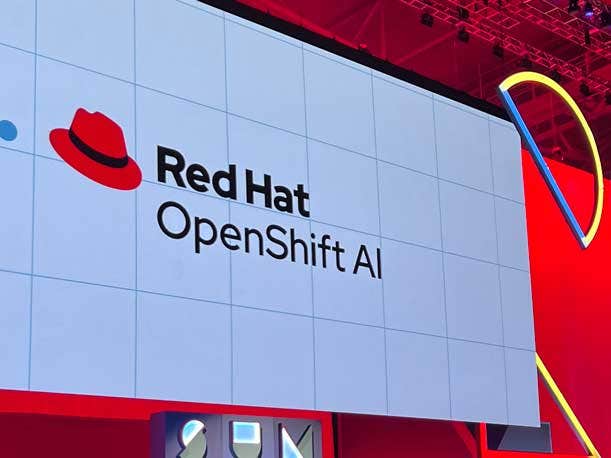
Open Source Led To This ‘Moment Of AI’
We’re in one of those [game-changing] moments right now. It’s the moment of AI. AI has moved from the obscurity of academia to the ubiquity of ChatGPT.
But it’s also moved from the power of few, to the power of many.
We are watching the impact and potential of open source that played out all those years ago, with operating systems and programming languages—now playing out with AI. We’re watching creativity on a global scale make its way into artificial intelligence through an open source revolution.
It’s the time to dream about the potential for your business, your industry, and to be the driver of change for the better.
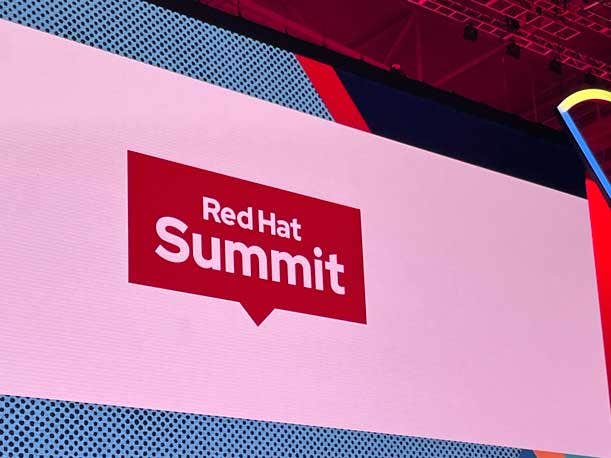
What Makes Red Hat Open Hybrid Cloud Different
All of these new announcements are built around our open hybrid cloud. Cloud isn’t a new message, everyone in the industry has been talking about it. You’ve heard it from us for nearly a decade.
So what makes Red Hat different? It comes down to our approach.
We are laser focused on enabling you to build an environment where you can deploy any application, anywhere—from a laptop to the data center, or to the cloud, or to the edge.
Whether deploying incremental changes to manage your realities today or revolutionary AI capabilities, we want to provide platforms that gets you there faster. Regardless of your starting point, our approach can help you accelerate on your unique journey with the specific needs of your industry.
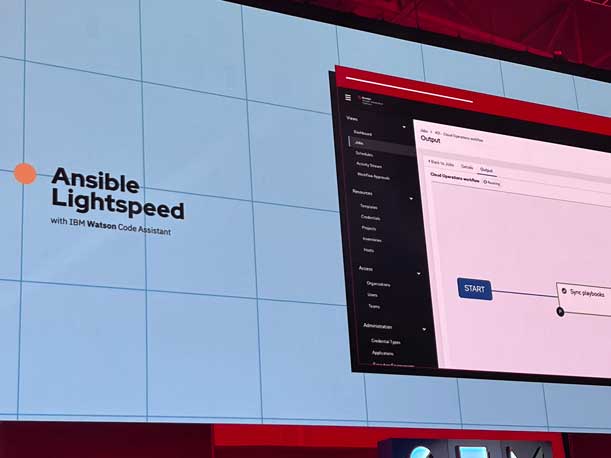
‘Amplifying Operator Skills With Ansible Lightspeed’
As development speeds up, we are amplifying operator skills with Ansible Lightspeed.
Explain the tasks you want to perform, and Lightspeed will generate the playbook for you using domain specific AI powered by IBM Watson. We’ve always prided ourselves on Ansible ability to automate hours of work down to minutes. With this, you can get to that point in seconds, regardless of your skill set.
(Ansible Lightspeed with IBM Watson Code Assistant is an generative AI service for Red Hat’s Ansible automation offering. Lightspeed promises more consistent, more accurate and faster automation adoption across organizations, according to Red Hat. It uses natural language processing and integrates with Watson Code Assistant to access IBM Foundation Models built on Red Hat OpenShift.)
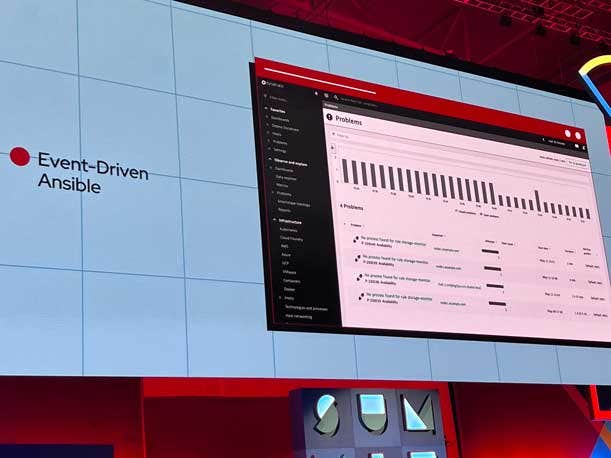
New Event Driven Ansible Plus Lightspeed Will ‘Transform Your IT Operations’
We also appreciate the complexity of running operations, and the need to automatically resolve the issues we know so we are free to work on the issues we don’t yet understand.
To enable this, we’re introducing Event-Driven Ansible, which delivers always-on automation to standardize responses where we don’t need a human to intervene.
Combine this with Lightspeed, and you can transform your IT operations.
(In June, Red Hat will roll out Event-Driven Ansible as part of Ansible Automation Platform 2.4. Event-Driven Ansible expands how users activate automation across hybrid cloud, according to Red Hat. It aims to reduce the risk of IT infrastructure errors and degradation, conserve resources and free IT workers for logic, application quality improvements and speeding up deployment.)
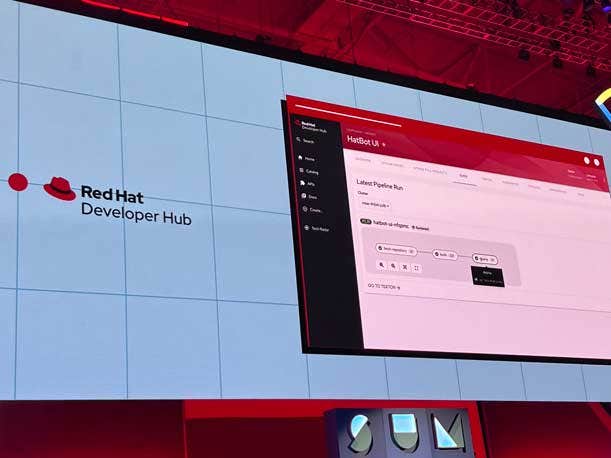
New Developers Hub Enables ‘A World-Class Developer Portal’
We’re launching with the Red Hat Developers Hub based on the Backstage Project. Our Developer Hub will allow you to build a world-class developer portal for your teams, guiding their choices to the best practices for your environment, and making development faster and more efficient.
Then to help you develop applications sets to handle the hybrid cloud, we will be demonstrating Red Hat Service Interconnect, letting you truly build hybrid applications without being a network expert.
(The new developer hub is an open portal aimed at streamlining development with a supported and opinionated framework. The hub provides curated tools, languages and resources with the promise of better applications and reduced friction across environments such as Kubernetes and Red Hat’s OpenShift. Red Hat’s Service Interconnect, based on the Skupper.io open source project, makes it easier for developers to migrate apps across environments and communicate across container clusters in different networks.)